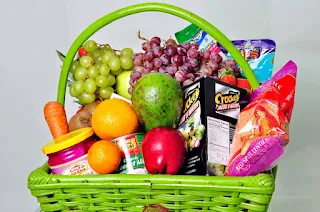10 Tips for Healthy Eating on a Budget line
10 Tips for Healthy Eating on a Budget
Introduction:
Eating healthy doesn't have to break the bank! With a little planning and smart choices, you can nourish your body and stick to your budget. In this blog post, we'll share ten practical tips that will help you achieve a balanced diet without spending a fortune. Let's dive in!
1. Meal Planning:
Plan your meals for the week ahead. This allows you to create a shopping list based on what you need, minimizing impulse purchases and reducing waste. Look for affordable recipes that use similar ingredients and consider batch cooking for leftovers.
2. Buy in Bulk:
Purchasing staples like grains, legumes, nuts, and seeds in bulk can significantly cut down on costs. These items often have a long shelf life and can be stored easily. Additionally, buying in bulk reduces packaging waste, making it a win-win for both your wallet and the environment.
3. Seasonal and Local Produce:
Opt for seasonal fruits and vegetables as they tend to be more affordable and packed with flavor. Local produce can also be less expensive since it doesn't require extensive transportation. Visit farmers' markets or consider joining a Community Supported Agriculture (CSA) program for fresh, affordable produce straight from the source.
4. Frozen Foods:
Frozen fruits and vegetables are an excellent budget-friendly option. They are often just as nutritious as fresh produce because they are frozen at their peak ripeness. Stock up on frozen options when they are on sale, ensuring you always have nutritious ingredients on hand.
5. Cook at Home:
Eating out can quickly add up, both financially and in terms of unhealthy ingredients. By cooking at home, you have control over the ingredients, portion sizes, and cooking methods. Experiment with simple yet delicious recipes that utilize affordable ingredients. You'll be amazed at the savings and how enjoyable cooking can be!
6. Plan for Leftovers:
Intentionally cook extra portions to have leftovers for future meals. This cuts down on the time spent in the kitchen and reduces food waste. Use leftovers creatively by transforming them into new dishes or incorporating them into salads, wraps, or stir-fries for a quick and budget-friendly meal.
7. Choose Plant-Based Proteins:
Plant-based proteins like beans, lentils, tofu, and tempeh are typically more affordable than animal-based proteins. They are also versatile and can be used in a variety of dishes. Incorporate these protein sources into your meals to save money and reap the health benefits of a plant-based diet.
8. Make Your Own Snacks:
Pre-packaged snacks can be expensive and often lack nutritional value. Instead, make your own snacks at home. Options like homemade granola bars, energy balls, or roasted chickpeas are inexpensive, nutritious, and customizable to suit your preferences.
9. Shop Sales and Coupons:
Keep an eye out for sales, discounts, and coupons on healthy food items. Many grocery stores offer promotions on staple foods regularly. Consider downloading apps or subscribing to email lists to stay updated on deals and discounts. This way, you can stock up on essentials without overspending.
10. Grow Your Own:
Even if you have limited space, you can still grow some herbs, leafy greens, or small vegetables in pots or containers. Growing your own food not only saves you money but also provides the satisfaction of eating something you nurtured. Plus, the freshness and flavor of homegrown produce are hard to beat.
Conclusion:
Eating healthy on a budget is entirely possible with the right strategies. By implementing these ten tips, you can enjoy nutritious, delicious meals without straining your wallet. Remember, small changes in your shopping and cooking habits can make a big difference. So, start today and make wholesome eating a sustainable part of your lifestyle!




Comments